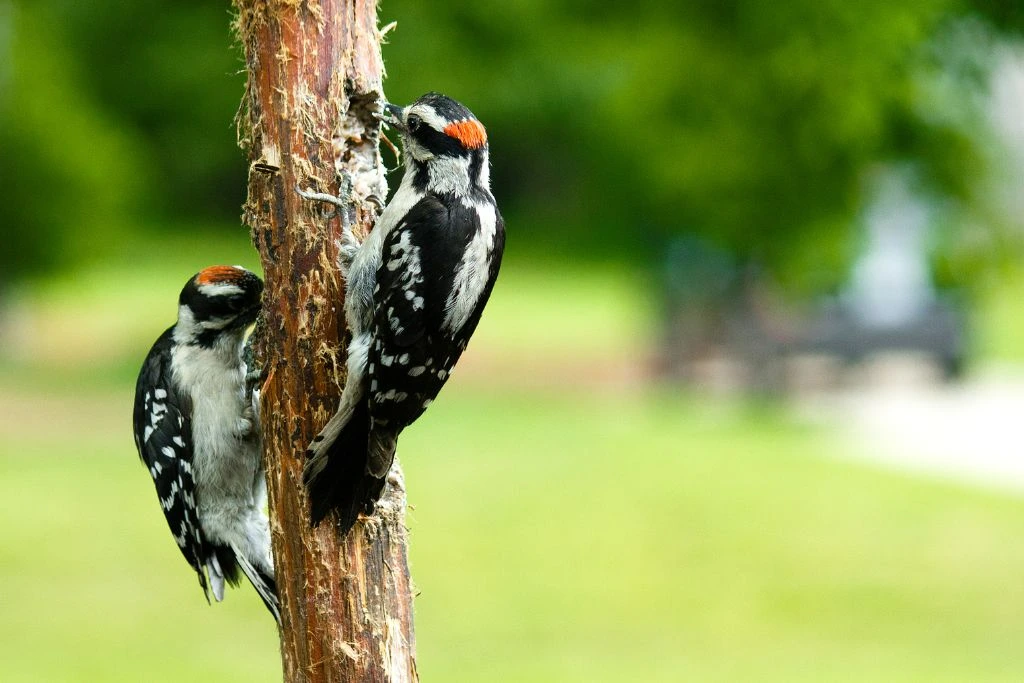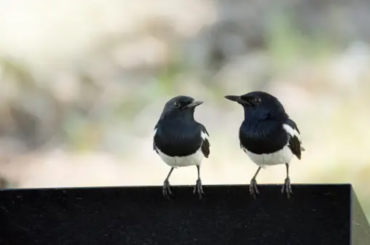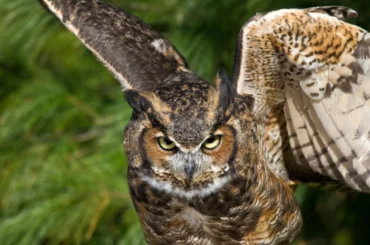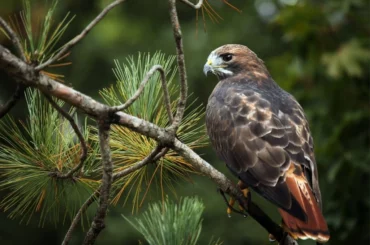Did you know that Ohio is home to at least seven distinct woodpecker species? These birds’ unusual habits and remarkable appearance have made them popular among ecotourists and bird watchers.
From the smallest Downy Woodpecker to the mighty Pileated Woodpecker, there’s a lot to learn about the woodpeckers in Ohio. So, grab your binoculars, and let’s explore these incredible birds together!
What Do Woodpeckers Look Like in Ohio?
Are you curious about the types of woodpeckers that call Ohio home? These fascinating birds are known for their striking appearance, unique behaviors, and distinctive calls. Discovering the numerous species of woodpeckers that make Ohio their home is a pleasant activity for any birdwatchers.
Despite the wide variety of woodpeckers inhabiting Ohio, these captivating birds share remarkable similarities in both their physical characteristics and behavior.
To drill into trees in pursuit of food, most woodpeckers have small bodies, short necks, and pointed beaks. They also have zygodactyl feet, meaning that two toes face forward and two feet face backward, allowing them to securely grip onto tree bark.
Most Ohio woodpeckers have a combination of black, white, and brown feathers, although there are some variations between species.
They are typically found in suburban or forested environments, where they can forage for insects, nuts, and seeds. So, keep your eyes peeled for these feathery pals, and be ready to learn more about the several woodpecker species in Ohio!
1. Downy Woodpecker
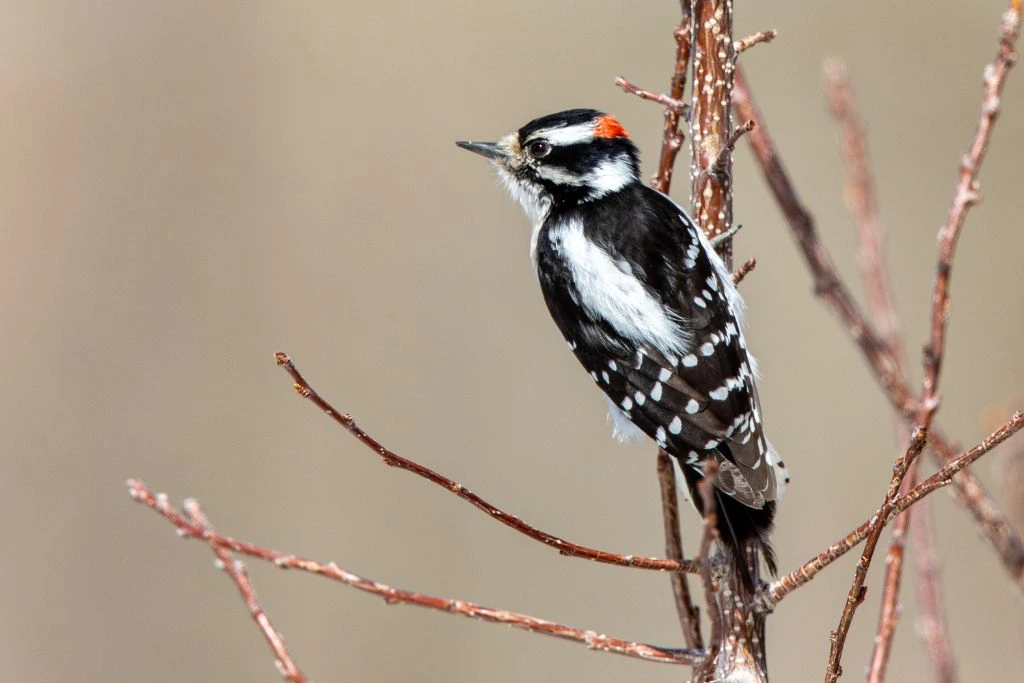
- Kingdom: Animalia
- Phylum: Chordata
- Class: Aves
- Order: Piciformes
- Genus: Dryobates
- Species: Dryobates pubescens
Downy Woodpeckers (Dryobates pubescens) are a common sight in Northeast Ohio. Measuring only 5 to 7 inches in length, these small woodpeckers in Ohio have a distinctive black and white plumage that makes them easy to identify. In addition to their unique appearance, Downy Woodpeckers possess several adaptations that make them well-suited for their arboreal lifestyle.
Wild Downy Woodpeckers often live for 6- to 8 years. These birds feed on insects, spiders, and even tree sap in various forest communities.
During the breeding season, Downy Woodpeckers excavate a nest cavity in a dead or dying tree. The male and female birds in a nest will take turns sitting on the eggs and tending to the young.
Downy Woodpeckers are often confused with their larger relative – the Hairy Woodpecker. However, you can tell them apart by looking at their bills, as Downy Woodpeckers have shorter bills than Hairy Woodpeckers.
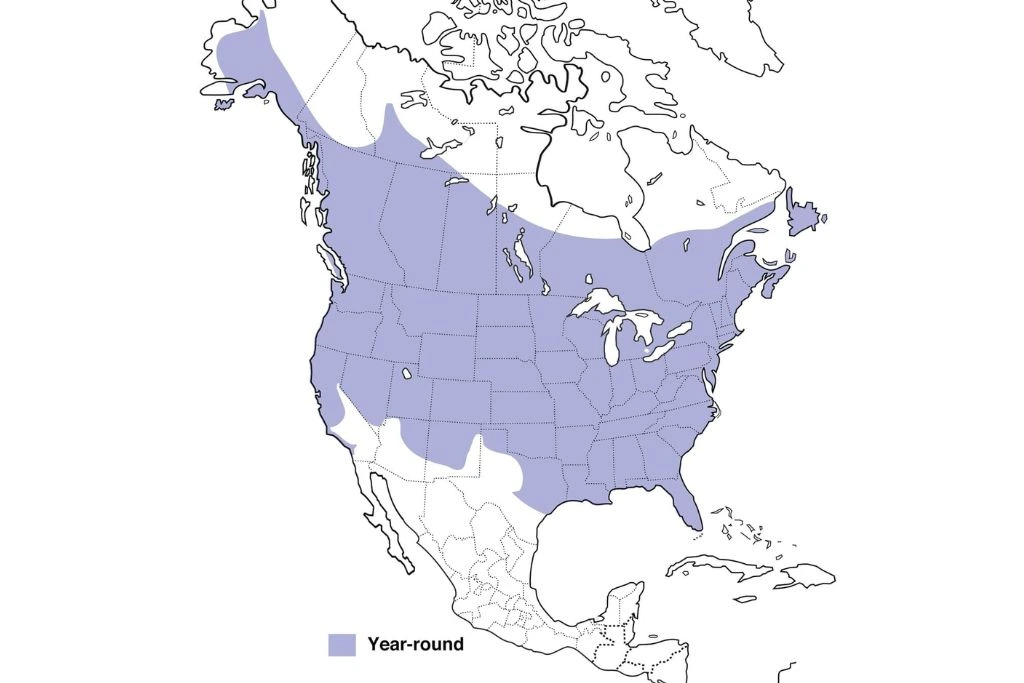
2. Hairy Woodpecker
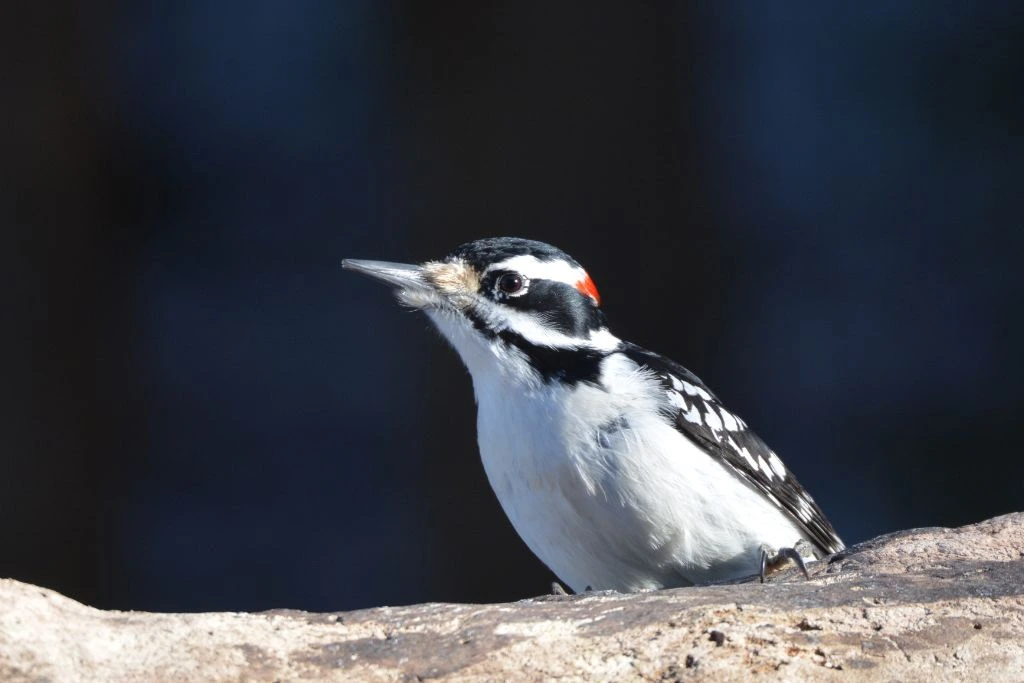
- Kingdom: Animalia
- Phylum: Chordata
- Class: Aves
- Order: Piciformes
- Genus: Leuconotopicus
- Species: Leuconotopicus villosus
The Hairy Woodpecker (Leuconotopicus villosus) is the largest in Ohio, measuring 9 to 10 inches. The black back and white belly, as well as the white wing stripes, make these birds easily recognizable.
Some kinds of Hairy Woodpeckers have been recorded living in the wild for up to 15 years. They eat primarily insects and get them by pecking at tree bark with their sharp, pointed beak.
One of the Hairy Woodpecker’s adaptations is its ability to cling to trees, thanks to its specially adapted feet and claws. They’re also equipped with a long, barbed tongue that can reach deep into crevices to extract insects. These woodpeckers prefer mature deciduous forests and can be spotted in various settings, from urban to rural areas, throughout Northeast Ohio.
When it comes to nesting and breeding behaviors, Hairy Woodpeckers are monogamous and form long-term pair bonds. They typically breed in the spring and build their nests in tree cavities or abandoned woodpecker holes. Females lay 3 to 6 white eggs, and both parents take turns incubating the eggs and caring for the young. The chicks usually fledge after 28 to 30 days.
These woodpeckers are commonly found in Ohio’s mature deciduous forests, as well as in suburban and urban areas with mature trees. So, if you’re looking to spot a Hairy Woodpecker in Ohio, head to sites with plenty of large trees and keep an ear out for their distinctive drumming sounds.
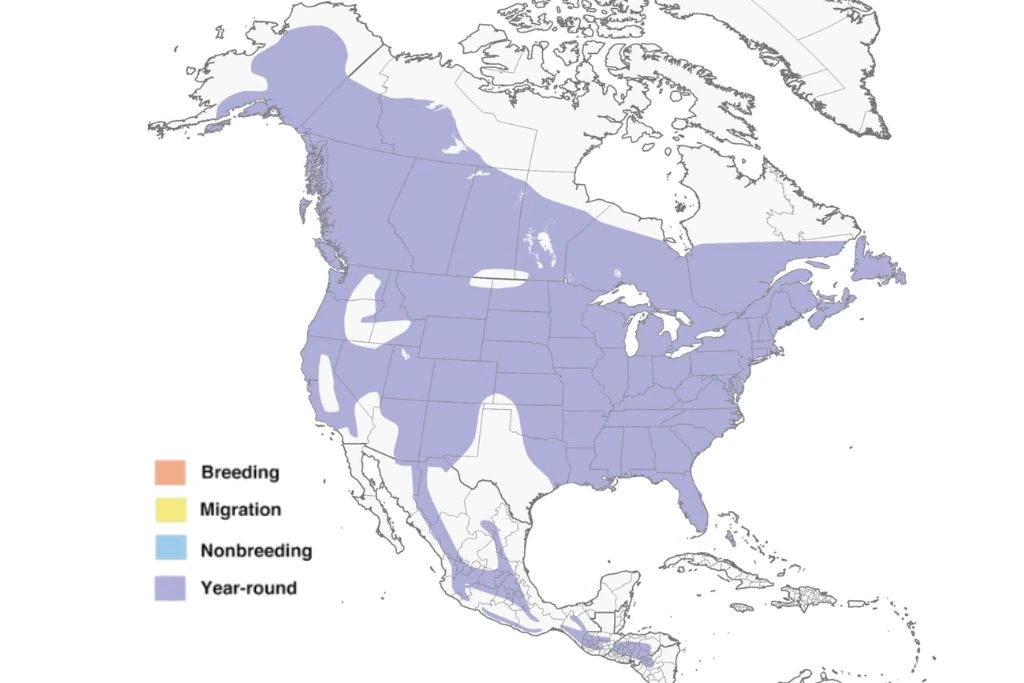
3. Red-Bellied Woodpecker
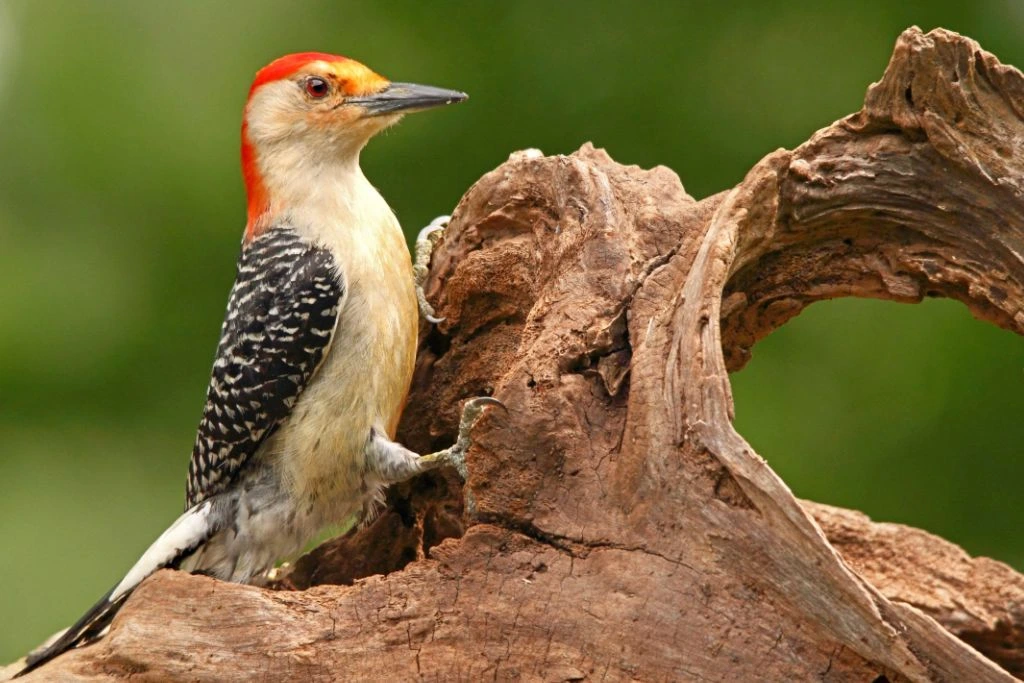
- Kingdom: Animalia
- Phylum: Chordata
- Class: Aves
- Order: Piciformes
- Genus: Melanerpes
- Species: Melanerpes carolinus
The Red-bellied Woodpecker (Melanerpes carolinus) is one of the most common yet unique Northeast Ohio Woodpeckers. Their wing span is between 13 and 17 inches, making them medium-sized birds. They have a red cap and nape, their belly is pale gray or white, and their back and wings are black with white bars.
The Red-bellied Woodpecker is distinguished from other birds by its long, sticky tongue, which is used for probing cracks and peeling back bark in search of insects.
These woodpeckers are highly adaptable, so you might spot them anywhere from a forest to a suburban backyard. These woodpeckers often gather in areas abundant with tall trees that provide both shelter and a plentiful food source. Their booming pounding and piercing calls are very well-known throughout the woods.
During February through June, the Red-bellied Woodpecker typically lays four to six eggs. Males and females share the responsibilities of raising the children equally. They tend to mate for life and are monogamous. They build their nests in tree cavities, which they excavate themselves or use abandoned holes from other birds.
The Red-bellied Woodpecker’s extended lifespan of up to 12 years is only one of many fascinating facts about this bird. They also have zygodactyl feet, which means they have two toes pointing forward and two pointing backward, allowing them to cling to vertical surfaces easily. If you’re hoping to spot a Red-bellied Woodpecker in Ohio, look for them in wooded areas or parks with large trees.
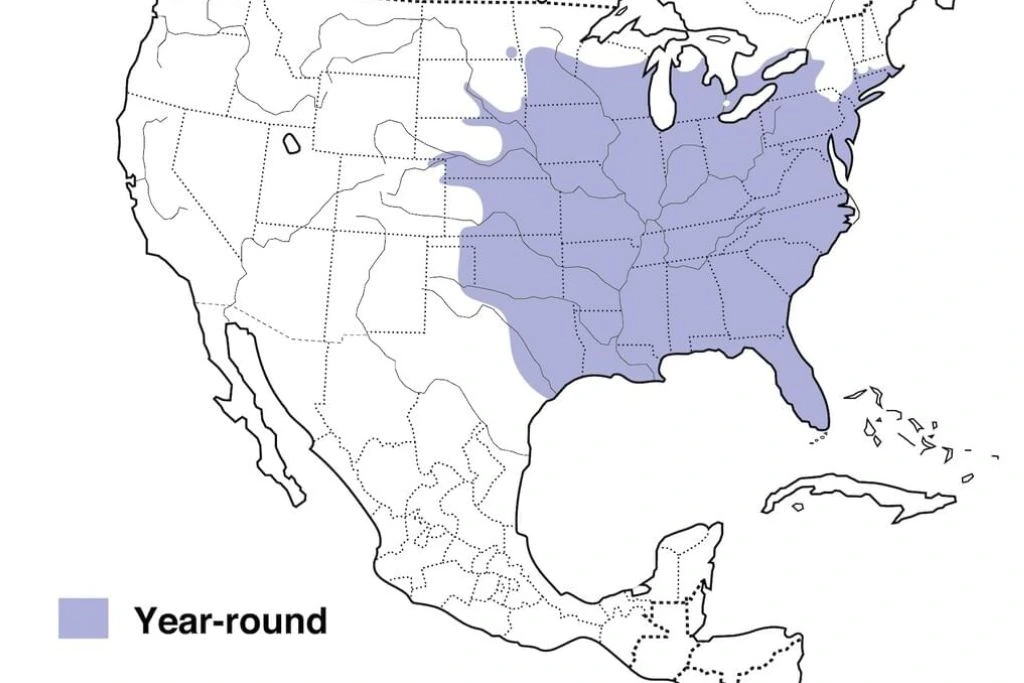
4. Northern Flicker
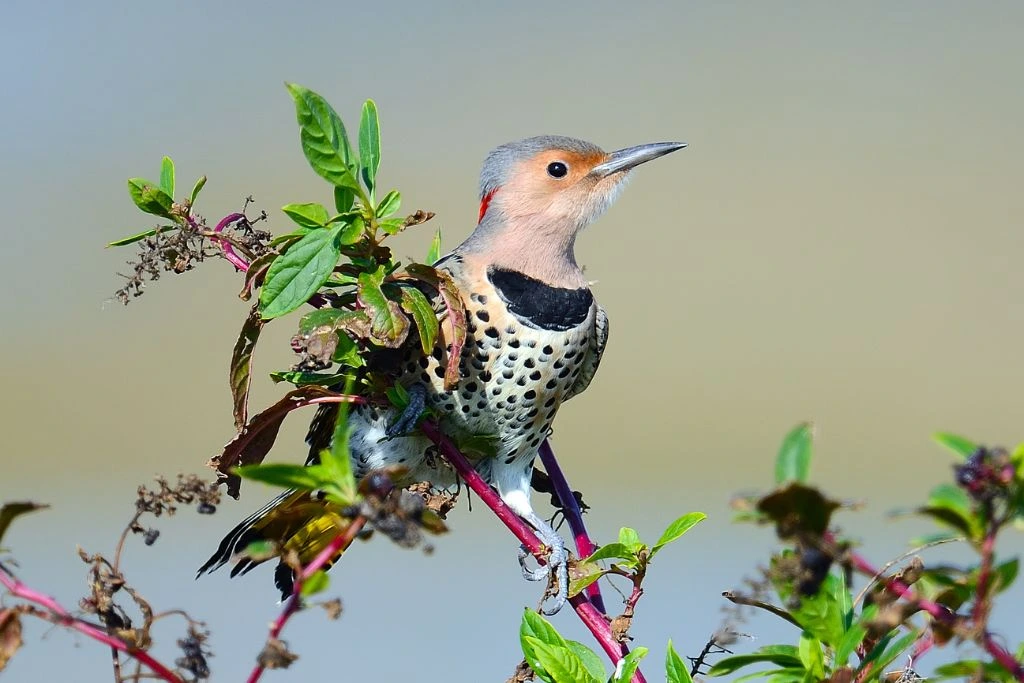
- Kingdom: Animalia
- Phylum: Chordata
- Class: Aves
- Order: Piciformes
- Genus: Colaptes
- Species: Colaptes auratus
The Northern Flicker (Colaptes auratus) is a medium-sized woodpecker with a unique appearance, featuring a speckled brown back, a spotted breast, and a distinctive black crescent on its chest. Its long, slightly curved beak is ideal for digging into the ground to find ants, which are its favorite food.
Northern Flickers can be found in open woodlands, meadows, and parks throughout Northeast Ohio.
In terms of nesting and breeding behaviors, Northern Flickers are cavity nesters and will excavate their nest sites in trees or use old woodpecker holes. They mate for life, and both parents take turns incubating the eggs and feeding the young.
Northern Flickers are sometimes mistaken for other birds due to their unique appearance and behavior. It can forage on the ground to hunt for its preferred food source, and this habit makes them easily confused with thrushes and other similar-looking birds.
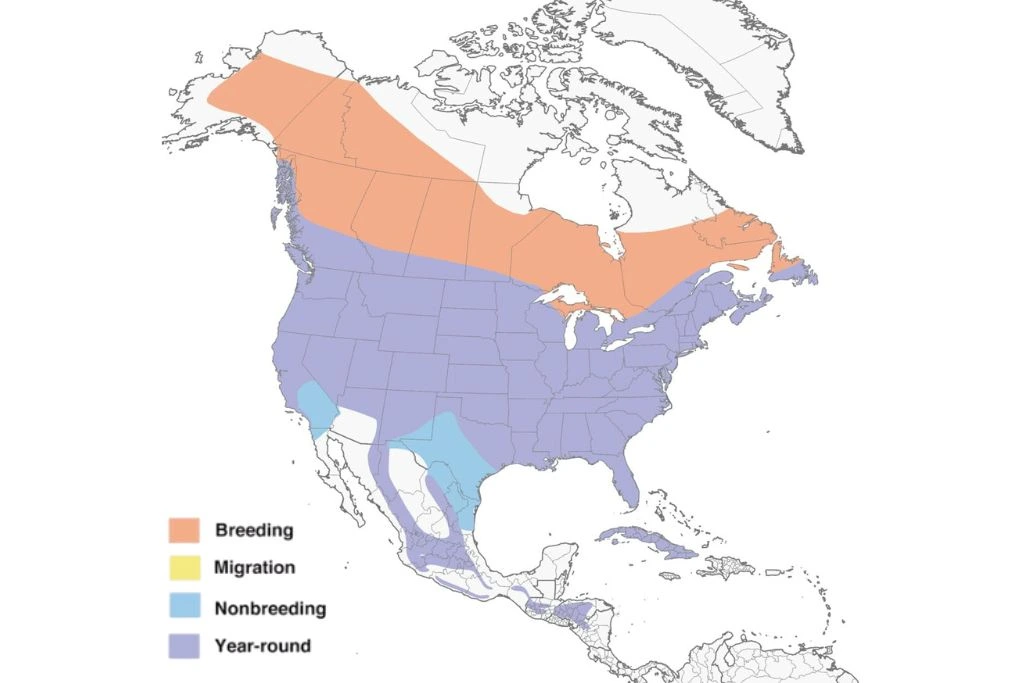
5. Pileated Woodpecker
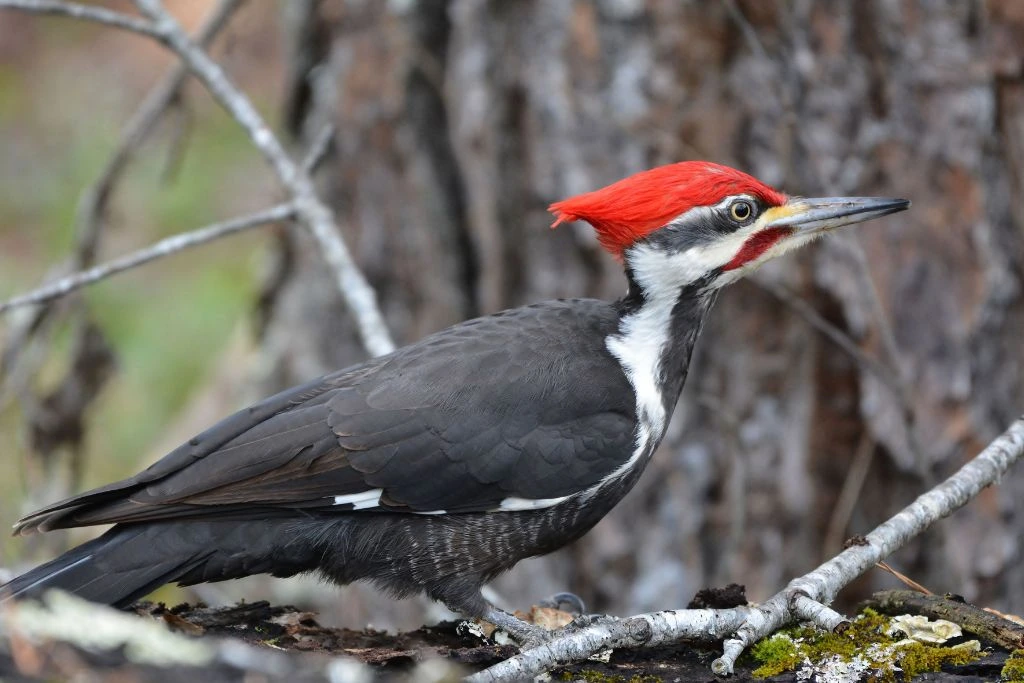
- Kingdom: Animalia
- Phylum: Chordata
- Class: Aves
- Order: Piciformes
- Genus: Dryocopus
- Species: Dryocopus pileatus
The Pileated Woodpecker (Dryocopus pileatus) is a large, striking bird, known for its unique black and white markings and bright red crest. They usually inhabit mature forests and are uncommon in urban areas. Their distinctive drumming and calls can be heard from far distances.
To find insects and prey, these birds have adapted to their forest environment by excavating enormous, rectangular holes in trees with their pointed, chisel-like bills. In order to reduce the likelihood of injury while digging, their neck muscles have developed uniquely. They also have strong claws that help them cling to trees while they drill and forage for food.
Pileated Woodpeckers typically nest in tree cavities, which they excavate themselves. During the breeding season, males establish a territory and use drumming and calls to attract females. Once a mate is found, they will work together to excavate a nesting cavity.
Interesting fact: they often leave their nest cavities to become homes for other animals like ducks, owls, and bats.
Most wild Pileated Woodpeckers don’t make it to adulthood because of predators, disease, or accidents, although they can live up to 15 years.
These woodpeckers are often found in forest areas of Ohio, particularly in the northeastern region. Keep an eye out for their distinctive red crest and listen for their loud drumming to spot one in the wild.
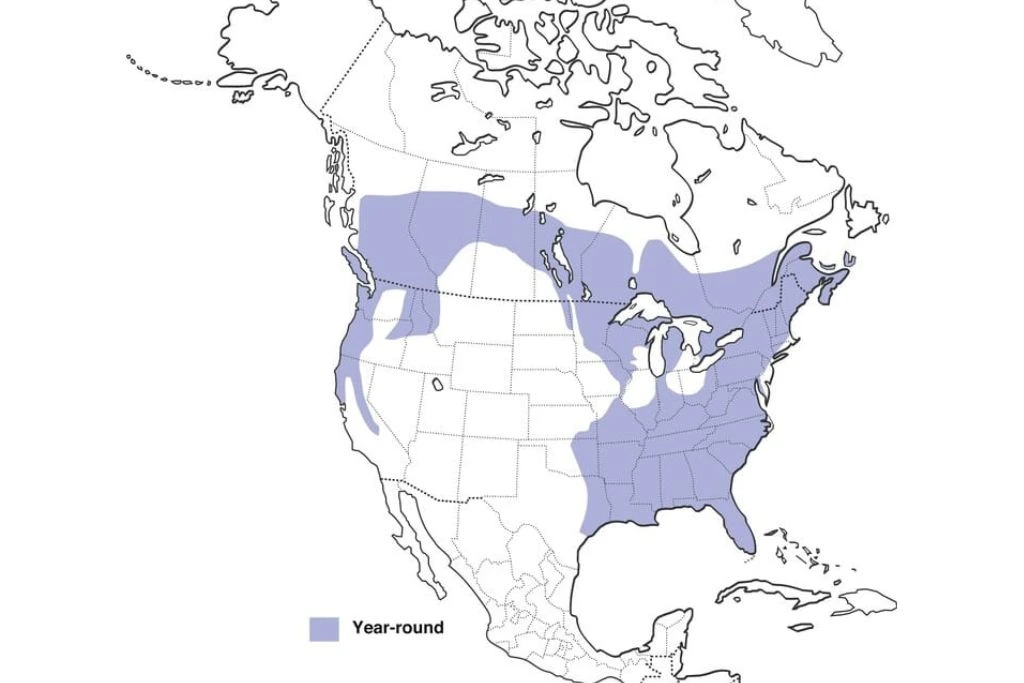
6. Yellow-bellied Sapsucker
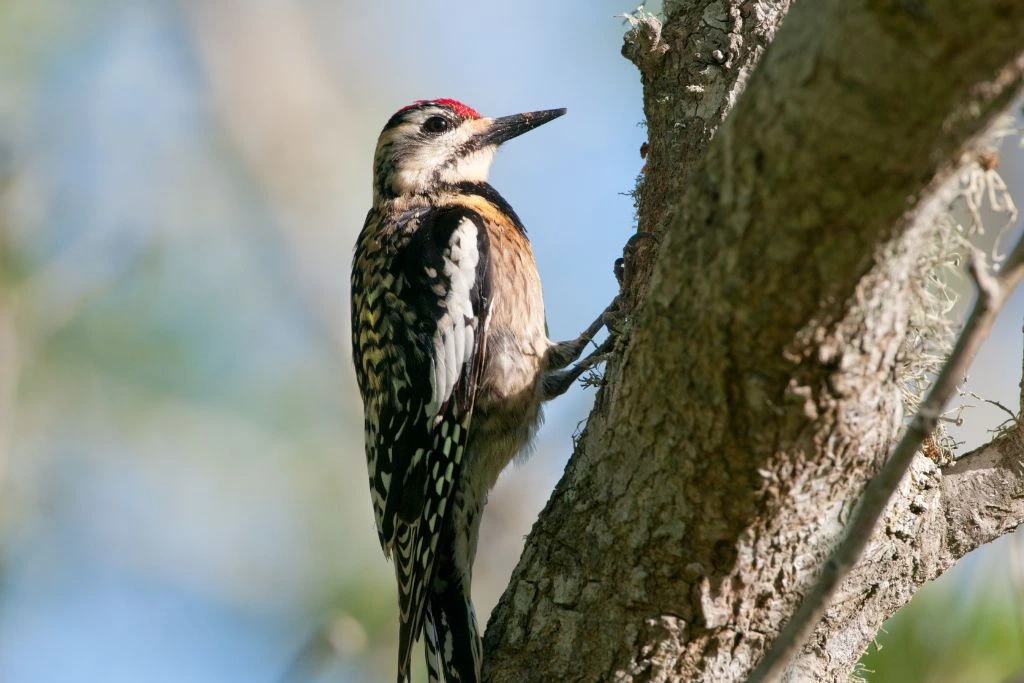
- Kingdom: Animalia
- Phylum: Chordata
- Class: Aves
- Order: Piciformes
- Genus: Sphyrapicus
- Species: Sphyrapicus varius
The Yellow-bellied Sapsucker (Sphyrapicus varius) is one of the smallest woodpeckers in Ohio. The red on its head and throat stands out against the black and white of this bird’s feathers, making it easy to identify. Both sexes of this species look similar. However, the male stands out due to his vivid red crown.
As its name suggests, the Yellow-bellied Sapsucker feeds on tree sap, which it extracts by drilling small holes in the bark of trees. This bird’s bill is specially adapted for this purpose, with a chisel-like tip that can easily penetrate tree bark. The sapsucker also eats insects and occasionally fruit.
The Yellow-bellied Sapsucker breeds in the northern forests of North America and migrates south for the winter. In Ohio, these birds are usually spotted during migration, but some may breed in the northern part of the state. Both males and females take turns caring for the young in the nests they construct in tree cavities.
The Yellow-bellied Sapsucker’s habit of drilling sap wells in trees can be beneficial to other species, such as hummingbirds and warblers, which also feed on the sap. Insects are also attracted to the sap, providing an additional food source for these birds.
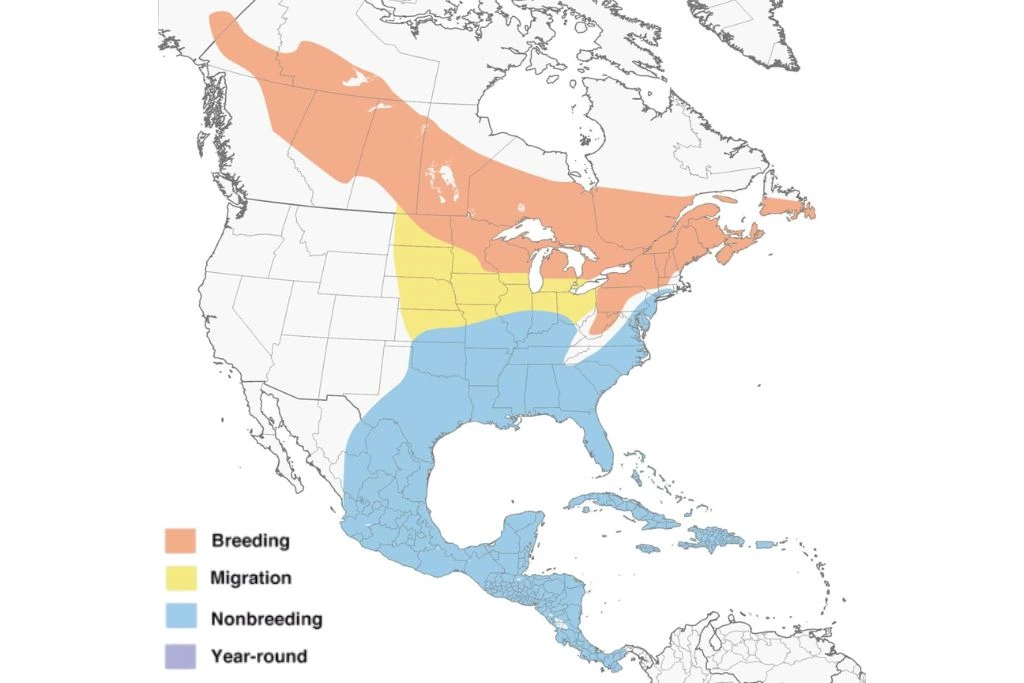
7. Red-headed Woodpecker
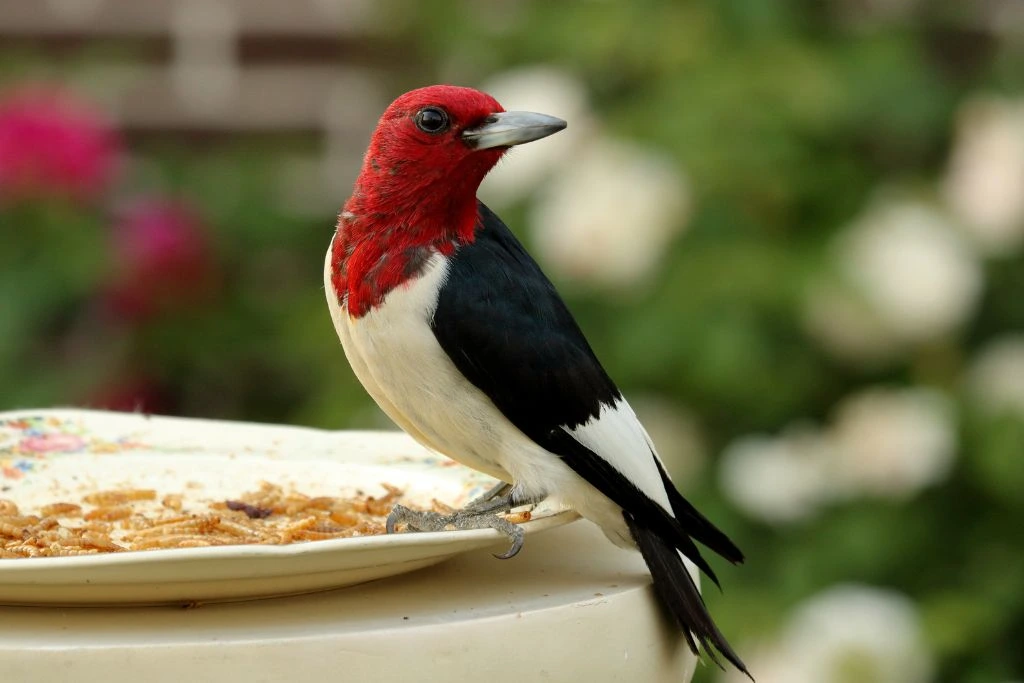
- Kingdom: Animalia
- Phylum: Chordata
- Class: Aves
- Order: Piciformes
- Genus: Melanerpes
- Species: Melanerpes erythrocephalus
The Red-headed Woodpecker (Melanerpes erythrocephalus) stands out due to its vivid redhead, black and white wings, and white underside. Its look is easily recognizable, and its harsh sounds can be heard well before seeing it. The average wingspan of these birds is about 18 inches.
Adapted to living in open woodlands, the Red-headed Woodpecker has a unique foraging behavior. Setting them apart from other woodpeckers, these birds have a special hunting technique where they capture insects while in flight and store food in tree crevices for future consumption. You’ll typically find them in mature deciduous forests, but they also inhabit orchards, parks, and golf courses.
When it comes to nesting and breeding, Red-headed Woodpeckers are monogamous and form a lifelong pairing. During the breeding season, they excavate holes in dead trees or branches and line them with wood chips. Its male and female kinds contribute to the 12 to 14 day-long incubation process.
Although this woodpecker is best renowned for its impressive aerial insect-catching skills, it also uses its strong beak to pound nuts and acorns into cracks in tree bark for later consumption. They can remember where they’ve hidden their food and will return to the same spot to retrieve it.
The Red-headed Woodpecker is widespread in Ohio, but it is more widespread in the state’s southern regions. Early mornings and late afternoons are the best times to observe them, and they favor broad woodlands with giant trees. Watch for their striking plumage and listen for their distinctive calls.
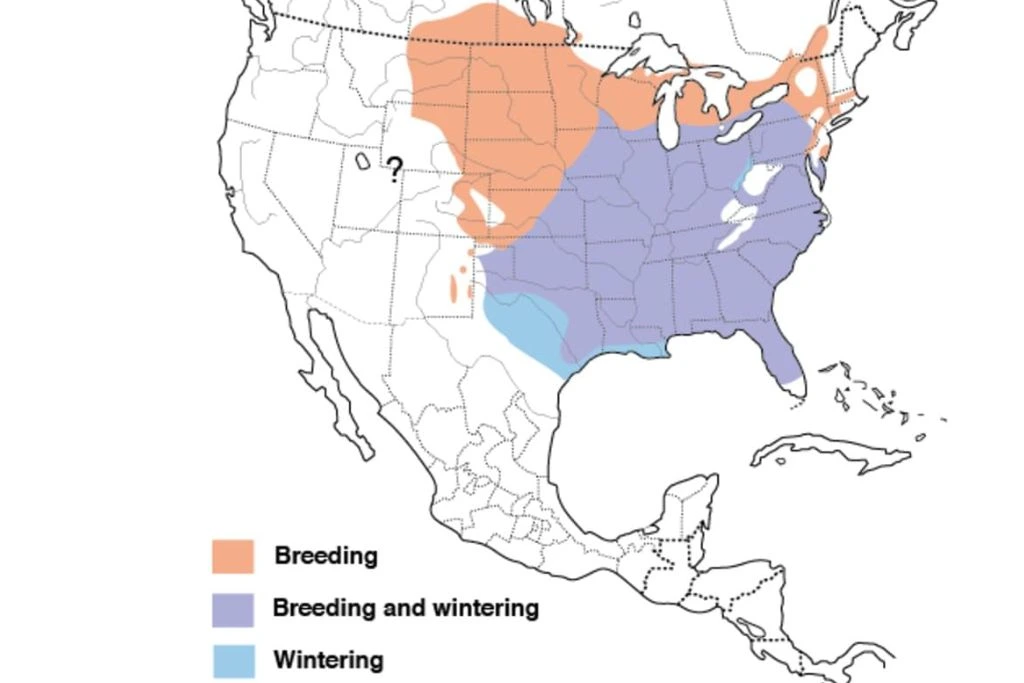
FAQs
What is the most common woodpecker in Ohio?
The most common woodpecker in Ohio is the Downy Woodpecker.
What is the largest woodpecker in Ohio?
The largest woodpecker in Ohio is the Pileated Woodpecker.
Where do woodpeckers live in Ohio?
Woodpeckers in Ohio live in various habitats, such as forests, woodlots, parks, and even urban areas with mature trees.

